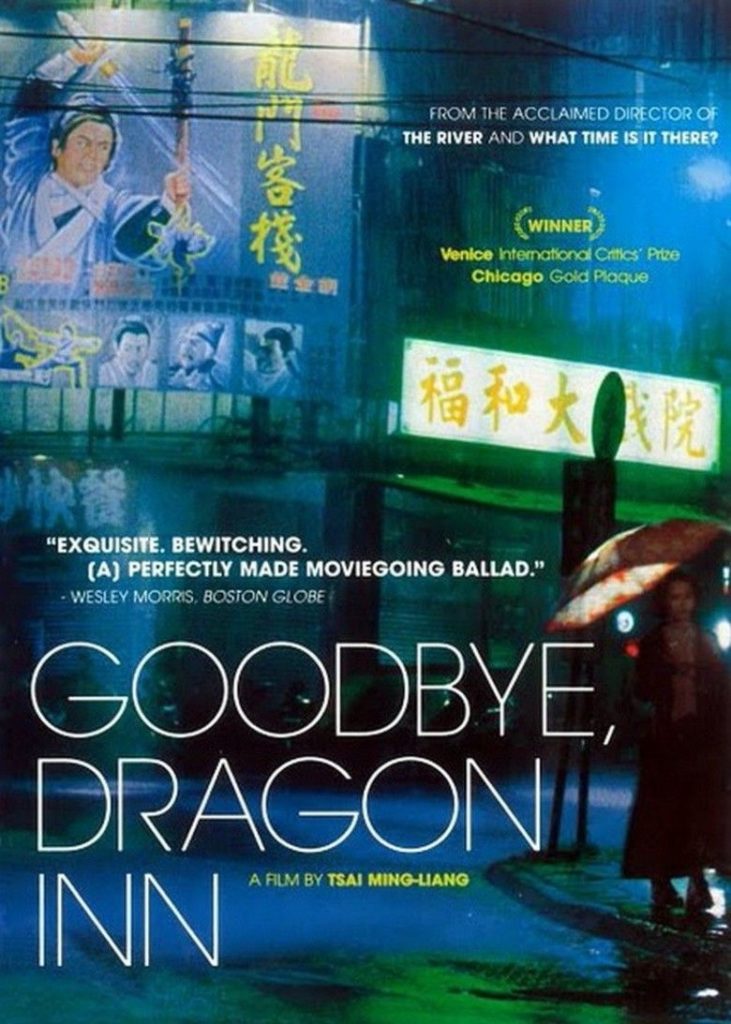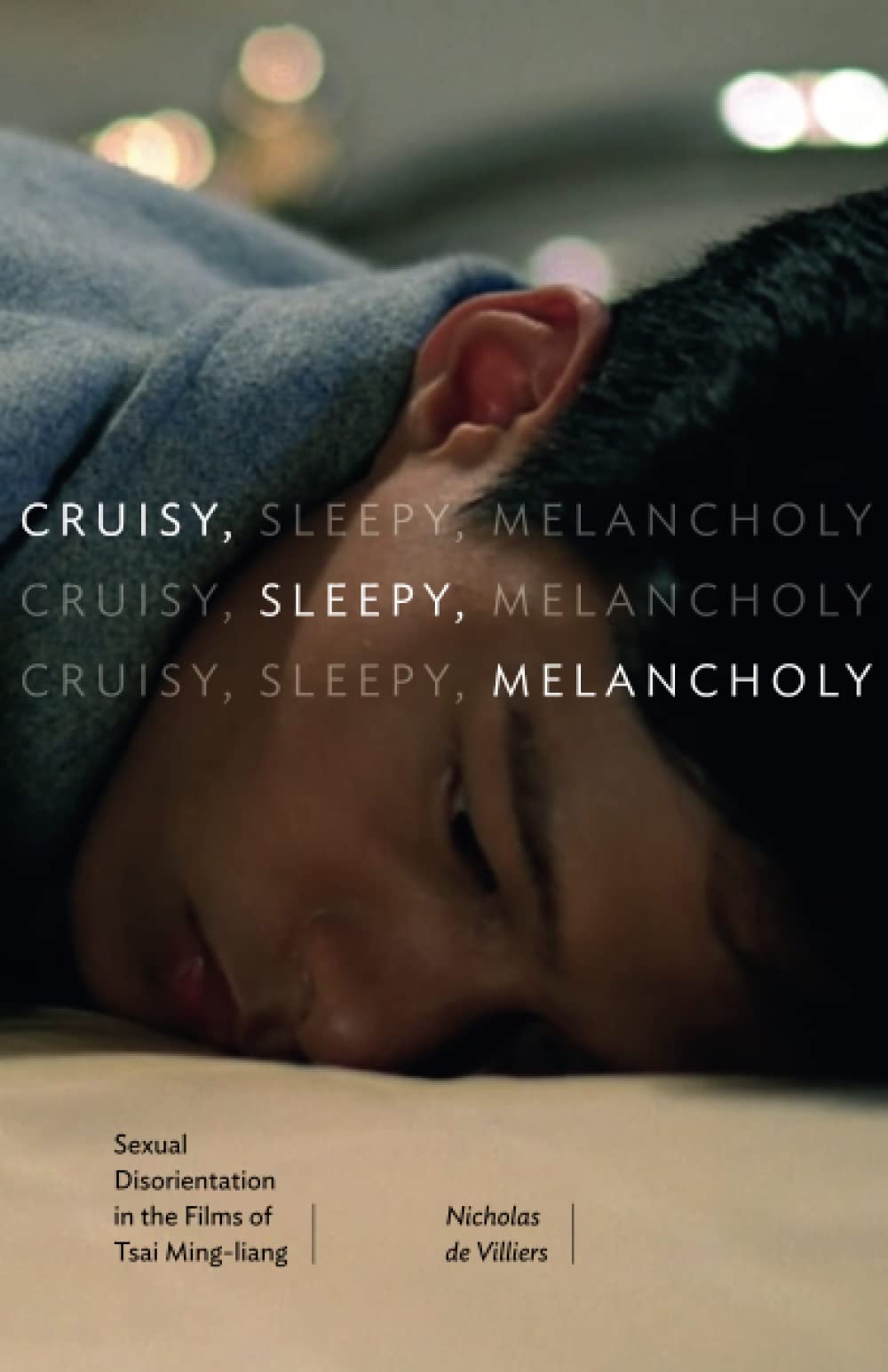by Brian Hioe
語言:
English
Photo Credit: Book Cover
CRUISY, SLEEPY, MELANCHOLY: Sexual Disorientation in the Films of Tsai Ming-liang by Nicholas de Villiers is a strong entry in the English-language literature on one of Taiwan’s most distinguished contemporary filmmakers.
De Villiers’ engagement is with the sexual politics and politics of space present in the work of Tsai, particularly regarding the sense of displacement present in many of his films. De Villiers accomplishes this through chapters that primarily set out arguments through pairings, as well as constellations, of films by Tsai.
Cruisy, Sleepy, Melancholy takes its name from what De Villiers seems to see as some of the affective registers present in Tsai’s work. What emerges is a complex and nuanced picture of Tsai’s oeuvre, in which Tsai’s protagonists–invariably played by his longtime collaborator and muse Lee Kang-sheng–drift through spaces that are not entirely alien, but from which they are both attached and unattached. Such spaces invariably touch upon desire, not in the sense of reading spaces as charged with desire, but as landscapes of sexual ambiguity, of fleeting encounters marked by desire, as well as sometimes with an undercurrent of playfulness and humor. Remarks on the slowness of Tsai’s cinema are also aware that this is an undercurrent of Tsai’s mise en scene, but that this perhaps ties back into the “sleepy” nature of the works, some of which seem to be situated on the border between awakeness and sleep.

Film poster for Goodbye, Dragon Inn
Tsai Ming-liang is often remembered among Taiwanese New Wave directors for his vivid depiction of urban alienation in films, a thematic that runs from early films such as Vive L’Amour all the way to more recent Stray Dogs. De Villiers manages to link this with Tsai’s sexual politics in an accomplished way that shows great attentiveness to the staging of Tsai’s works, and the historical-temporal context from which they emerged–doing so without any reductiveness. The readings primarily treat Tsai in his own respect, rather than as part of the larger spectrum of New Wave film.
The treatment of Tsai’s work as a discrete body in and of itself is particularly helpful with regard to awareness of Tsai’s own background as a Malaysian Chinese filmmaker in Taiwan. The work highlights how nationality comes up as a concern in Tsai’s film, pertaining to the complexity of identity in Taiwan, and the many layers of Taiwanese history. De Villiers conveys this while avoiding readings that are inherently linked to Tsai’s biographical experience, taking the lessons of the death of the author closely.
To this extent, the discussion of the role that France plays in What Time is it Over There?, with regards to aesthetic doubling, homology, and symmetry or lack thereof, is also useful. perhaps drawing out the strand of the Taiwanese New Wave that is not only in conversation with international cinema, but in which the specter of the international figures heavily. This perhaps is more broadly reflective of Taiwan’s position internationally. De Villiers is attentive to how Tsai’s work is part of global cinematic language, but also specifically in and of itself.
De Villiers’ awareness of the interwovenness of Tsai’s works shines through in his reading of the intertextuality and metatextuality of Goodbye, Dragon Inn. The reading of The Hole and The Wayward Cloud in terms of queer camp and musicals is helpful, drawing on other reads, while also highly appropriate, with de Villiers also making note of audience reactions to Tsai’s work in his readings, including revulsion to sex scenes, or simply shock. Drawing out the camp elements of sex in Tsai’s oeuvre is a useful framework that provides productive new readings, as well as an intervention into readings that have perhaps erred on the conservative–or even prudish. But with regards to the reference to audience reactions to Tsai’s work, this continues the attentiveness to the affective dimension of Tsai’s oeuvre.
Cruisy, Sleepy, Melancholy is an elucidating work, then. Apart from that it sheds new light on one of Taiwan’s best-known filmmakers, it lays out a new way of interpreting Tsai’s works that draws on history, the urban fabric, affect, while opening the way for creative readings of Tsai. The book adds to and also builds on our understanding of Tsai, while also pushing beyond, and being more than that.



